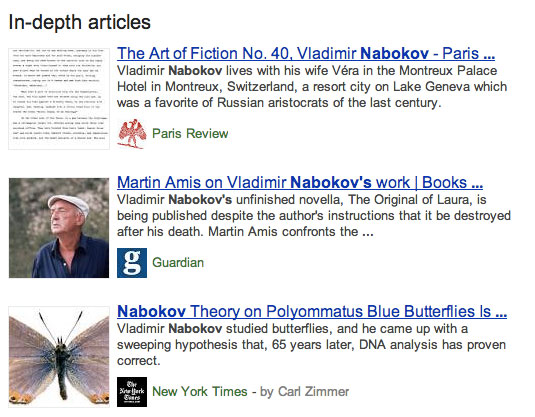Prepare Your WordPress Content For Google’s In-Depth Articles
In a move that further signals Google’s intentions to move away from the standard ten blue links approach and towards more meaningful search results, the search giant has introduced a new section to the SERPs for what it terms “in-depth articles”. The idea is to provide links to articles that Google considers to provide particularly rich and substantial content about some topics.
Using Schema.org Markup
Schema.org is an agreed standard for semantic markup that is used by all of the major search engines. To qualify for the in-depth article sections, content must include a subset of the schema markup for articles, including markup for the title, alternative headline, and description.
Virante has recently released a plugin for WordPress that will take care of inserting the proper markup into articles.
Authorship Markup
Most bloggers should already be aware of Google Authorship. It’s a system that uses Google Plus profiles to link an author to their work and has the side benefit of creating rich snippets in the SERPs which include the author’s photograph and their name.
Setting up Authorship on your site is fairly straightforward; you can find full instructions on how to do it in Google’s help documentation. There’s also a WordPress plugin for Google Authorship that simplifies the job of linking from a site to a Google Plus profile.
Logo Markup
If you take a look at the above picture of the in-depth article section on the search results for the writer Vladimir Nabokov, you’ll see that each has a large picture taken from the article to the left, with the usual title and description to the right; beneath the description is the name of the publisher and a small picture of the site logo.
To include the logo, Google needs to be able to identify the preferred logo image on your site and it does that with some more markup from Schema.org. The logo markup should be applied to an image that appears on the site, as explained on Search Engine Watch.
In addition to the various bits of schema markup, Google also requires that articles spread across multiple pages use the rel=next and rel=previous tags so that the pages can be properly identified.
The three in-depth article spots are going to be heavily competed for, so there’s no guarantee that implementing the above will actually earn you a spot, but each aspect of preparing articles for inclusion into the in-depth section is beneficial in its own right, so there’s really no reason not to.



